Pears for your Heirs
“Plan ahead. It wasn’t raining when Noah built the ark” Old Arab proverb
- History of Pears
- The ancient Chinese, believed that the pear was a symbol of immortality. (Pear trees are extremely long lived.) In Chinese the word “li”, means both “pear” and “separation”. For this reason, tradition says that to avoid a separation, friends and lovers should not divide a pear.The Asian pear, known as “li” in China and “nashi” in Japan, originated in China about 4,000 years ago. Cultivated varieties were mentioned in Chinese writings dating to 1134 B.C. From China they spread to Japan, Korea and Taiwan. The sweet-tart, apple-shaped Okusankichi pear (also called Nihon Nashi) and the the ultra aromatic Chojuro, are heirloom pears dating to the 1890s. The two li cultivars Ya Li and Tsu Li are served at traditional Chinese New Year festivities and are at least 1,000 years old.Pyrus (or Pirus), the Latin name for Pear-tree, is the name of a genus of plants belonging to the natural order Rosaceae. Pyrus Communis, the European wild pear, from which the numerous cultivated varieties have sprung, is found over a great part of Europe and Asia. It originated in southwest Asia, where it was grown some 4,000 years ago and it was cultivated in Europe by 1000 B.C. The fruits of Pyrus communis are small, hard, gritty, sour and astringent so it is not surprising that there is little evidence of its use for food by prehistoric people in Europe.Its origin is lost in obscurity although the lake-dwellers in Switzerland are said to have stored the fruits for winter use. It was probably brought by the Greeks, or possibly by birds, from Asia, and after a time became a favourite with the Greeks as well as the RomansPears are not referenced in the Bible but are mentioned in The Odyssey and their use seems to have been well established at this time. The ancient Greeks adored the pear, a fruit the poet Homer (850 B.C.) called “a gift from the gods”, the pear tree flavor is, “a nectar so refreshing, Zeus himself was known to sip it from his silver goblet, whilst wearing headband antlers”Aristotle’s successor, Theophrastus, discussed Greek pear culture circa 300 B.C. and mentioned the art of grafting, although accident no doubt gave rise to the first improvements in fruits almost unheeded by man, until the welcome changes were noticed by him. The same operation is still going on in nature todayThe pear was sacred to the Greek goddesses, Hera (Juno to the Romans), and Aphrodite (Venus to the Romans), According to Pausanias, writing in the second century A.D, one of the oldest statues of Hera was carved of wild-pear wood.Perdrix, “Lord of the Pear Trees”, was one of Athens most sacred kings, when he was cast into the sea to die, the goddess, Athena, carried him to heaven in the form of a Partridge. When the legend of “The Partridge in a Pear Tree”, was made into a Christmas Carol, the symbol of Christ was substituted for Lord Perdrix. Partridge in French is perdrix, pronounced “per dree” which sounds like pear tree and this confusion is probably responsible for the mistranslation from the original French carol.In Roman mythology, pears are sacred to many goddesses: Juno, Venus, Pomona, a goddess of gardens and trees and to Minerva, the goddess of wisdom. 40 or 50 types of pear were named by Roman writers; Cato the Elder wrote about pears naming several varieties: the Volema, the Ancian Frost pear, the Tarentine, the Must pear and the Gourd pear. Varro described methods of propagation of pears and Vergil wrote “nor does the same twig bear Crustumian and Syrian pears and the heavy wardens”When Roman author Pliny the Elder penned a “Natural History” about 79 A.D., he described 41 varieties varying in colour, texture, flavour, season and keeping qualities. He mentioned that Crustumian or Volemum (Winter Bon Chrétien) was the nicest variety. He tells us that many of the sorts were called after the countries from which they came, such as the Syrian, the Alexandrian, the Numidian, and the Grecian. Thus he mentions Pira Nardina, a pear with the scent of nard (Spikenard perfume) and the Pira Onynchina, ( Cuisse madame) a pear of the colour of the finger nail, These last are evidently Greek. When the Romans had tasted the richer flavour of the apricot, the peach, the pomegranate, the citron and the orange, they contented themselves with applying to all their new fruit the common denomination of apple, This is still true in France today where the common potato is called “pomme de terre” the apple of the earth. Once again, with these other fruits, or apples, the Romans continued the practice of discriminating them from each other by naming them after their country of origin.Pliny also claimed that pears were harmful eaten raw, but were good when boiled with honey. This is a good indication that many of the Roman and Greek pears were perry pears which, if not actually harmful eaten raw, taste revolting. Pliny was also the first of the ancients to write about alcoholic beverages made from pears and he recommended the Ampullaceum and Falernian pears for making tasty wine. Medicinally he recommended pears for use as poultices.
Dalechamps (1513-1588) identified Pliny’s Ampullaceum as the Poire D’angoisse type of choke pear and the Onynchina as the Cuisse Madame.
Daléchamps De La Quintinie
Jean-Baptiste De la Quintinie (1626-1688) the head of the French royal gardens at Versailles, wrote prolifically on pears and devoted a whole chapter to the Winter Bon Chrétien and said it is the same pear as that which the Romans called Crustumium or Volemum.
Palladius, in the 4th century, wrote of pears being used like apples to make both a drink and a sauce and said that the Romans preferred wine made from pears to that from apples. He also gave instruction on how to make perry, then called Castomoniale.
The Romans no doubt took their pear-trees northwards to the far-flung corners of the Roman Empire, where they flourished in Gaul and Britain. Tacitus implies in some of his writings that pears were cultivated in Britain at the time of the Roman occupation.
With so much mythology surrounding them it is no wonder that they feature in the folklore and fairy tales of several European countries, Perhaps because of the feminine shape of the Pear (see-cuisse madame) they have also been associated with early fertility cults. The Greek goddess Hera represented women, especially wives and fidelity in marriage.
Throughout the centuries and within living memory, pears trees have been seen as a ‘Tree of Life’ and until recently, in Europe, it was customary to plant a fruit tree at a wedding. The longevity and fruitfulness of the trees were thought to give strength to the marriage and children. As each child arrived, an apple tree was planted for every boy, and a pear tree for each girl.
Fall of The empire
Gibbon, in “History of the Decline and Fall of the Roman Empire,” Vol 1 p. 52, remarks: ” In the more remote ages of antiquity, the world was unequally divided. The East was in the immemorial possession of arts and luxury, whilst the West was inhabited by rude and warlike barbarians, who either disdained horticulture, or to whom it was totally unknown. Although Charlemagne (circa 800) issued a list of plants to be cultivated which included pears, there is probably some truth in Gibbon’s statement
1066 and all that, an a’ that, an a’ that
It is unlikely that the wild fruit of Britain had been much improved by its inhabitants, until their attention was directed to the subject by the monks, who brought the knowledge of gardening to this island from the continent, or by the of the nobility and warriors who had seen the value of the art when abroad, probably during the crusades. In Britain, definite records are not available until after the Norman Conquest but The Domesday Book of 1086 mentions old pear trees several times as boundary markers, implying their cultivation before this period. We are indebted to the monks for many improvements in agriculture in Scotland. The remains of orchards and physics gardens, in the mid 1800’s, were still to be seen at the ruins of the Abbeys of Lindores, Arbroath, Kilwinning, Jedburgh and Kelso, They show that gardening was cultivated by them with considerable taste in Scotland and, fortunately, the pear trees were not all destroyed with the churches at the Reformation.
One of the most important monastic orders to make its home in Scotland was the Order of Tiron. The Mother Abbey of the Order of Tiron, was established in Thiron Gardais, Perche, France in 1109 ad. by Bernard d’Abbeville, a disillusioned hermit from woods of Craon, near Angers.
Abbey de La Trinite de Tiron
By 1200 ad, the Order of Tiron owned 117 priories and abbeys across Europe and David I, King of Scots, favoured the Tironesian monks (the Grey Monks) with grants of land and property. Lindores Abbey was built between 1178-1191,
Lindores Abbey
The first abbot, Guido, a prior of Kelso(1124), related to the Earls of Warrick, was responsible for its construction along with the other Tironesian monks. The stone carving of a bear and ragged staff, the Arms of the earl of Warrick, purloined from the Abbey in the 1700’s, and now above the doorway of the bear pub in Newburgh High Street is thought to commemorate Guido.
The monks from Lindores, like all other religious orders surrounding Strathtay, (Arbroath, Tironesian, Cuper Angus, Cistercian) cultivated orchards around their respective abbeys and lands. This enterprise was particularly successful commercially, as seen by the remains of the huge orchards, in the Carse of Gowrie and Newburgh. We find, a couple of miles from Lindores Abbey, the Grange of Lindores, where the local people of the surrounding area fued small farms from the Monks, Grange aux Dime (grange aux dixieme or tenth’s/tyths) is only a couple of miles from the Abbey of Tiron in Thiron Gardais. Carse Grange, was a major farm buildings of Coupar Angus Abbey (Cistercian) “Grange is one of the major orchards remaining on the Carse. The bottom of orchard is reputed to be haunted by monks. The site of a chapel was thought to exist somewhere in the orchard” Crispin Hayes- Historic Orchards of the Carse of Gowrie 2007
There is also corresponding Granges associated with Arbroath Abbey (Tironesian) i.e. Letham Grange, Abbey Grange and as far away as Monifieth which was at one time the ‘home farm’ of Arbroath Abbey. It isn’t known if any orchards remain in any of these places.
Newburgh, recently re-establish contact with The Order of Tiron, from Thiron Gardais and after an absence of several 100 years they visited the abbey in Lindores in 2011. The Lindores Chapter of the Order of Tiron and are currently grafting pear trees and hope to re-introduce them to Thiron Gardais, for their new community orchard, in time for the 900th anniversary of the founding of the mother abbey in Thiron. The Order of Tiron has been re-established.
Perry Pears
Pears were a favourite with the monks, the earliest pears were probably perry pears and making alcohol was a favourite pastime for the monks. We learn from their records that Friar John(Jean) Corr was making whisky in 1494 AD, for King James IV in Falkland Palace, enough for 1500 bottles no less! The first mention in historical documents of whisky being made in Scotland. So it would appear that in 1494 whisky making was already established industry at the Abbey. Near to the Abbey we also find an area called the “Vineyard”, a relic of their attempts to make wine. Even today, Belgian Beer is still brewed by Trappist monks and Buckfast is still a favourite “monkly” tipple in Scotland. The huge remains of the Brewery, in the field in front of the Lindores Abbey show just how industrious the Tironesians were.
The Monks attempted to improve the perry pears by grafting, to produce a less harsh pear, which could be consumed by both humans and animals. This ”Warden” Pear, would have been a baking or kitchen pear, eaten, either as a desert, with added honey, or as a type of potato substitute, flavoured with herbs and spices. These Warden type pears would have also been used as animal feed and in some cases continued to be made into perry. The Warden pear, popular during the reign of Henry the VIII (1509-1547), was used to make perry and as a preservative; those who drank Warden perry praised its “austere” flavor. Sometime before 1388 the Wardon, was introduced by Cistercian Monks at Wardon in Bedfordshire. It was widely used for pies, which became known as Wardon pies. Although Vergil had already mentioned that the Romans knew a pear called the Warden, it is possibly that Wardon in England took its name from the type of pears the monks planted there. Eleanor of Castille, wife of Edward Longshanks, was a keen gardener and in the court accounts for 1276-92 Gold-Knapes are mentioned. Golden/Gouden/Goud Knap were bountiful in the area around Knap near Dundee, it is possible that Knap was so called because of the type of pear planted there by the Tironesian monks of Arbroath, in the same way the Wardon was named by the Cisterians in Bedfordshire.
Perry, was once consumed by the barrelful in Europe and was a first-rate drink in France, Charlemagne loved it and it was Napoleon’s favorite beverage. In 1568, herbalist John Gerard glorified the popular drink, saying, “Wine made of the juice of Peares, called in English Perry, is soluble, purgeth those that are not accustomed to drink thereof; notwithstanding it is as wholesome a drinke being taken in small quantities as wine; it comforteth and warmeth the stomacke, and causeth a good digestion.”
Gerard showed that the number of pear varieties had increased since the beginning of the century and he illustrated, the Katherine; the Saint James; the Burgomet; the Bishops; and the Winter Pear. He mentioned wild or hedge pears inculding the Great Choke, the Small Choke, the Wild Hedge Pear, the Lowsie wild and the Crow pear. He said that many of these pears were harsh and bitter and others of such a choking taste that they could not be eaten. These pears were often used for making perry.
Botanist John Parkinson, a contemporary of Gerard wrote that, “Perry made of Choke Pears, notwithstanding the harshness and evill taste, both of the fruit and juice, after a few months, becomes as milde and pleasante as wine.”
Several writers in the 16th and 17th centuries also maintained that pears were poisonous to eat as the following quotation from a 16th century manuscript written by monks in Worcestershire (quoted from Williams in “The Perry Pear”), testifies: Peres causeth ye colyck passion in ye bowlles, wyld peres stoppeth and noyeth ye stomake, but ye grete tame peres byn better usid in meates than the lyttle, and the juice of both usid before dyner stopeth ye bely, and usid after dyner layeth ye bely.
Perry pears were described by English botanist John Evelyn (1620-1706) as, “of such insufferable taste, that hungry swine will not smell to it, or if hunger tempts them to taste, they shake it out of their mouths.”
In the 1800’s it was said that “The best Perry is made from the wild choaky Pear, and require a few Years to meliorate its juice in the Cask to make it drinkable, and then it is an excellent, pleasant, drink”. Choke or Chalk would appear to have been a common name in Scotland and in England and for any perry pear and the more coloured the pear is, the better.
One variety of choke pear is “poire d’Angoisse”, a variety of pear that was grown in Angoisse, a commune in Dordogne, France in the Middle Ages, which was hard, bad tasting, and almost impossible to eat raw. In the words of L’Académie française, the pear is “si âpre et si revèche au goût qu’on a de la peine à l’avaler” (“so harsh and crabbed of taste that one can only with difficulty swallow it”). These qualities and the common meaning of angoisse in French language (“anguish”) apparently originated the French idiom avaler des poires d’angoisse (“swallow pears of Angoisse/anguish”) meaning “to suffer great displeasures”. Possibly because of this idiom, the names “choke pear” and “pear of anguish” have been used for a gagging device allegedly used in Europe, sometime before the 17th century
 The pear of anguish. I’ll leave this to your own imaginations
The pear of anguish. I’ll leave this to your own imaginationsAlthough many orchards have disappeared around the Abbey’s and religious sites in Scotland, from about the 1700’s onward, the High Street in Newburgh was built in the middle of the largest of the Lindores Abbey orchards. This orchard was divided into long thin “rigs” and each rig garden contained with 2 or 3 lines of fruit trees. Although the monks were gone, this dividing up of the abbey orchard ensured that this orchard and the cultivation of pears didn’t end with the reformation and the sacking of Lindores Abbey. Although the number of fruit trees today in Newburgh is about 1000, from the survey taken in 2004 (not including the 600 or so newly grafted pear trees in my garden) there remains even to this day about 150 orchards, which is why Newburgh remains the fruit center of Scotland. What you are looking at here is possibly the largest orchard in Scotland, the difference being, it is owned by all of the inhabitants of Newburgh, rather than just one land owner
1842-1888 map of Newburgh. Courtesy of National Library of Scotland
Similarly, in the Carse of Gowrie, the huge commercial orchards simply changed hands once the religious buildings were torn down.
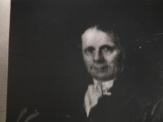 David Booth, Barns o’ Woodside in Newburgh,
David Booth, Barns o’ Woodside in Newburgh,David Booth wrote in 1814 that the oldest pear trees in Newburgh are at least 300 years old. i.e.1514 ad. He also says that they are grafted onto an existing older rootstock, a very common practice, even today, but that the pear trees he mentions are grafted onto very old rootstock, Possibly 200-300 years old. This means that the original rootstock and trees were planted between 1200 and 1300 ad. These are the original trees first planted by the monks. David Booth also pointed out that if a branch was allowed to grow from below the grafting point, the pears that are produced are the same as those in the orchard next to the Abbey, many of which were still standing in 1814. There exists even today, 2-300 year old pear trees in Newburgh which were probably grafted onto rootstocks planted by the monks so we may still be able to rescue these pear types from extinction by taking cuttings from below the graft point.
The re-use of old rootstocks continues today in Newburgh
More interestingly he comments on the old pear trees in the orchard next to the Abbey and says that they are very poor quality and that “The fruits of the old pear-trees at the abbey, are in general, of the worst possible quality; or perhaps they have greatly degenerated. The original names of the Abbey pears are unknown ; but the people here, have, from time immemorial, given them names corresponding with their nature: such as Choak Pear, Pear Soot, Pear Wash, Pear Deil, and other appellations still more expressive of disgust”!
William Blackwood, in 1832, in an account of the orchards of Clydesdale mentioned that “Robert Lockhart, Esq. of Castlehill, ordered several hundreds of pear-trees and planted them on rich land, in front of Camnethan Priory. The trees grew well but when they began to fruit, he found, that instead of the rich well-flavoured dessert pears he had ordered, all of them were of the kind known in Lanarkshire by the name of “pear-devil,” the worst of all pears. He of course instantly cast them out, as cumberers of the ground”.
In the Journal of horticulture, Vol II, 1866, states that, “Every orchard of long standing has its own Pear Deil, and no one Deil is like another, neither does any orchardist covet the Deil of his neighbour.”
The Quarterly Journal of Agriculture, Vol 4 Clydesdale 1814, mentions “poor quality pears include, Yellow Calder, Pear Devil, Pear Wash, Pear Pepper, Swans Egg
Thomas Shortreed, in 1822, in an account of the ancient orchards of Jedburgh, mentions the “Worry-Carle.— A large coarse winter pear, also called Wash Warden, “As its name denotes, this was a very bad pear, and has only met with justice in being allowed to die out. It could hardly be used as a pear for eating and, like the Grey Warden, and other inferior sorts, might probably be used only for making perry. Since writing the foregoing, I have learnt that my notion upon this particular has not been very correct, for a gardener here has lately informed me, that he had once a large quantity of the Worry-Carle (one of the worst pears I have noticed), in his possession, which, as they were known to be coarse pears, he laid up in a bye corner on the ground floor of a stable, in some hopes of their improving and becoming fit for eating. They were in vain offered to sale in the market, and actually lay twelve months without any apparent change, their dusky green colour being, at the end of that time, nearly as fresh as when they were taken from the tree. As they continued hard and insipid he at length thought of boiling them, and by that process they became very palateable, and, as my informant expressed it, “as sweet ” as sugar.”
The agriculturist’s manual, in Edinburgh, By Lawson seed and nursery co, ltd 1836, mentions pears suited for the manufacture of perry in Scotland. Barland,. Old Field, Holmore, Teinton Squash, Huffcap, Roughcap, Longland, Elshinhaft*, Double-blossomed*, Pear Duncan*. Those marked thus *, are also suitable for the kitchen or baking and are Scottish varieties. The Elshinhaft is a synonym of the Yellow pear of Bambriech, and also of the Kilwinning pear, The Pear Duncan is now believed extinct and there remains only one double blossomed pear tree in the Carse of Gowrie
After 1700, the focus in Scotland was on the “improvement” of the pear trees and to produce dessert pears. This preoccupation with the breaking and melting butter (beurre) dessert pears continued through the Victorian era and up until the present day. It has been suggested that perry made from warden type table and kitchen pears, or indeed dessert pears, produced a watery, thinner perry which contributed to the decline of its popularity. The owners of Port Allan in the Pow of Erroll would disagree but it is certain that the tannings and malic acid in perry pears contribute enormously to the taste and alcohol content. It would appear from all of the accounts that the writers of the time had fallen out of love with perry pears. They certainly no longer had any interest in these perry pears and are only concerned with comparing the perry pears to the finer dessert eating pears of the day. An unfair comparison at best. It is perhaps the case that there existed an irrational distain for the labours of their “papish” forebearers and also perhaps a tee total attitude prevalent amongst the horticulturist writers of the time. Robert Lockhart of Clydesdale certainly “Cast out the Devil pears with religious zeal”. Harsh? Evil? No Doubt, but perry pears are not for casual munching. They were bred for centuries for one reason, and one reason only. To make alcohol.
It is interesting to note that “every orchard still had a “Deil” pear in 1822, and indeed many of the orchards in the Carse and Newburgh still do. Not “coveting a neighbour’s Deil Pear” may be synonymous with saying they were not targeted by scrumping kids. Perhaps this dislike of perry pears by the horticulturists of the day was not shared by the local population. Indeed, the names of these, “inferior” pears seem to be very consistant right across Scotland. I would hazard a guess the the Pear Wash and the Wash Warden(Worry Carl) are a scots rendition of the word “Squash”, as in the Teinton Squash or the Arlingham Squash. Other Gloucester and Hereford perry pears have equally derogatory names, Bastard Sack, Bastard Longdon, Blood Pear and Dead Boy etc.
If names like these don’t deter scrumping kids, nothing will. So perhaps for the first time, I can now hazard a list of Scottish perry pears-
Yellow Calder, Pear Deil(Devil Pear) Pear Wash(Worry Carl/Wash Warden) Pear Pepper, Swans Egg, Pear Soot, Choke Pear, Elshinhaft(Kilwinning/Bambriech), the Double Blossomed Pear (pyrus Tyronsens sp) and Pear Duncan
Nb, the Deil Pear should not be confused with the dessert Diel Pear grown in the 1800’s by a famous continental pomologist
Dessert Pears
Orchard cultivation continued in Strathtay and by the early 1800s we find a large number of “Scottish” dessert varieties throughout the region, almost one for every town and village in the area, Perth, (Craig’s Favourite) Benvie (a Kilwinning pear), Gourdiehill, Maggie Duncan and Pear Duncan(a perry pear), both named after the owners of Gourdiehill, Seggieden, Knap(gouden), Monorgan, Elcho, Pitfour ,Airlie, Earn, Abernethy, Lindores, Bambriech Yellow, Green pear of Hill (Parkhill in Newburgh), St Andrew, Pow Meg,(named after and suited to the area around the numerous “Pow’s” drainage culverts, which abound on both sides of Strathtay. e.g. Carpow, (pronounced Poo in Fife) and the Pow of Errol at Port Allan in the Carse.
This list is only of the pears which are linked to towns and people in Strathtay, there are many more.
Drummond, Black Auchan, Maggie, The Pund pear, The Sheeps Heid Pear, Musk Pear, Grey Good wife of Glasgow, Rob Hynd, Crawfurd or Ballencrieff Pear, Lady Lamont, Grey and Red Honey, Douglas Pear. Fair Maid, Pitfirrane, Ludd Pear, Buchanan Pear, Green chisel, The Bell Tongue pear etc.
These are only a few of the the pears which were raised in Scotland. They were selected for a number of qualities. Abundance of crop, the regularity of the crop i.e. does it regularly fruit each year etc., but most importantly, the time of year that the fruit was ready. The Crawford, the Lindores, the Glasgow Yellow, the Glasgow Gold and the Craig’s Favourite were selected as the earliest ripening pear in Scotland. The Citron de Carmes, raised by the Carmalite nuns, is ready on St. Magdalene’s Day, July 22nd. In France!! In Scotland, the colder summers take longer to ripen the fruit. However, this pear does not keep well on the branch and in Scotland the skin splits before the fruit is ripe and as such is not much use this far north. The Black Auchen, thought to come from Auchen Castle or Dundonnell, is a winter pear and ready in December. The idea here is to have ripe fruit all through the year, the early pears do not keep, it is said of the Craig’s Favourite that it “was ready by noon, rotten by one”, but the Black Auchen has a thicker skin and will keep, if stored properly, until April. The Black Auchen was a very desirable pear but all attempts to grow it in the south of England failed as the warmer summer caused the fruit to ripen too quickly and produced a second rate pear. These considerations were more important in a time before fridges and freezers.
The Tironesian monks also grafted scion material, undoubtably sent from France of some of the finer French dessert pear varieties and some extremely old examples of which still exist in this area,
The Jargonelle,-In the city of Perth it may be seen acquired in wherever there is ground sufficient to plant it. Never did bourgeois of Rheims exhibit more partiality for his favoured Rousselet than the citizen of Perth does for his adopted Jargonelle. Fruit Trees Of GB, R Hogg 1885
The Bon Chretian- The names of many of these kinds of pears bear witness to their foreign origin. In a treatise on Fruit Trees, printed in Paris, a.d. 1548, the following notice of the Bon-Chreton pear occurs : — ‘ They are,’ the author says, ‘ of surpassing sweetness, and so tender and juicy that they dissolve in the mouth ; they sometimes grow to the weight of a pound, and bear every year;’ a description which is still applicable. The author says, that ‘ the Bon-Chreton was first brought from Campania, near Naples, in the time of Charles VIII. (a.d. 1494). It is interesting to learn the origin of trees, which are flourishing in our orchards, and which, after an interval of nearly four hundred years from their first production from the seed, are still propagated by grafting. There are several very old Bon-Chreton trees in the orchards of Newburgh, still bearing large crops. “Lindores Abbey and its burgh of Newburgh” A. LAING, 1876
Some of the French pears in Scotland are now extinct in France, eg,
The Longueville “Though the name is now unknown in France, it is conjectured that the tree was brought over from that country by The Douglas when Lord of Longueville in the 15th century.” Trees of it still exist in the old orchards about Jedburgh, and on Tweedside. Fruit Trees Of GB, R Hogg 1885. Likely imported by Mary of Guise, Duchess of Longueville (1882 Michelle)
The Cuisse Madame -was called Queeze Madame by Sir Walter Scott in Rob Roy, and Madame Koosh, in a survey of the orchards of Scone Abbey in 1697. It was believed by some French writers to be the Onynchina of the Greeks mentioned by Pliny the Elder in 79 ad. These French pears mentioned above have been grafted and will be returned to Thiron Gardais in 2014, for the 900th anniversary of the founding of the Order of Tiron
In the abandoned orchards of Strathtay, we have genetic strains of many of the European pear types dating right back to the earliest times. Although the people who planted and nurtured these trees are long gone, as is the profound knowledge they held, the fruits of their labours are still with us. Each of the old trees represents almost 1000 years of expertise and selection of the best scions from each of these pear types. None of our very old pear trees was grafted by accident. The scion material would have been very carefully selected from the best trees from far and wide. We are amateurs in comparison to these orchard growers, when the seasons fruit failed in the 1800’s, people starved. We just go to the supermarket. However, we do have a window of opportunity to save and preserve all of their hard work. This window of opportunity is closing fast and time is running out for us to act
The Last of 10,000 trees at Gourdie hill, Dundee
“Patrick Matthew’s famous orchard Gourdiehill was once the largest orchard in Scotland, reputed to have 10,000 trees on its 35 acres. It was planted by Matthews in the mid 19th Century. In about 1860 two of Matthew’s sons emigrated to New Zealand. There, they set up the first commercial orchard in the Antipodes with seed and trees from Gourdiehill “ Crispin Hayes, Carse of Gowrie Orchards Survey 2007
Patrick Mathews was accredited in the second edition of Darwin’s “Origin of Species” as being the founder of the term “the survival of the fittest”. A phenomena he had noticed, and published articles, about 30 years before Darwin.. He also complained about the design and type of steel used in the first Tay Rail bridge, stating that building it further upstream would halve the costs, money which could be better spent on the poor of Dundee who in the 1870’s still had a 50% infant mortality rate. He died in 1788, a year before the Tay bridge disaster. His Great Grand Daughter Errol Jones has recently written a family history of Patrick Mathews sons adventures in New Zealand.
Pears for your Heirs
Because of falling commercial returns, Scotland’s heritage fruit has become increasingly endangered in the last 20 or so years. Many pear types are down to the last example, there being more giant Panda’s in Scotland than Lindores or Black Auchan pear trees, to name but 2 of many near extinct varieties. Even more of these wonderful pear trees are yet to be identified but genetic fingerprinting may help rectify this in the future.
Much excellent work has already been done by local focus groups, Newburgh Orchard Group, Carse of Gowrie Orchard Group and individuals such as Margaret and Andrew Lear, Crispin Hayes and Dr John Hulbert. The local councils of Fife, Angus and Perth and Kinross also deserve a mention for their continued support and encouragement. However, these trees in these orchards are dying out, whether through the depredations of man or by the natural ravages of time, pear trees are not immortal, one way or other they will come down. 3 very old pear trees in Port Allan orchard were lost last year. Extinct is forever.
My own focus is on gathering the scion wood from these old trees and grafting them onto new pear and quince rootstock. In doing so, this ensures that the pear types are saved for posterity for when the last big examples do eventually succumb to the ravages of time. Having grafted all of the locally available known pear types, I have now turned my attention to the unknown varieties, numbered ancient pear trees are less glamorous than those with a provenance and a name, but at this stage in the project, I believe, it is more important to conserve these pear trees than to identify them. That will surely come later.
What to do with these trees? Apart from promoting them locally, (the local small “accidental” land holders have been particularly receptive) The scale of this project is only now becoming apparent. There are thousands of pear trees that need to be grafted and we need somewhere to put them. I have 600 already.
One solution is to approach the local Councils and ask them if they are willing to place them into the local environment. Local councils already have the framework in place, they already spend a great deal of time and energy pruning and maintaining 1000’s of trees in communal areas, parks, streets public buildings and even on the sides of the road. I would encourage the local councils of Scotland to take more interest in our heritage fruit. All that is required is a change of focus on their part.
At a national level, the Scottish Government should consider introducing a larger carbon footprint offset for heritage varieties of fruit trees than for other types of tree. Holyrood should consider introducing legislation to enforce the planting of such endanger trees in new housing estates and public spaces. Why should Dewars ice ring in Perth be surrounded poplars? Why should Perth council invest in 800 fruit trees of unknown provenance from Brogdale? Which may or may not thrive in Perth. Why should Perth’s own indigenous pear tree, Craig’s Favourite, be allowed to die out while money is spent preserving the heritage fruit from other parts of Britain? Why should the new V and A Museum in Dundee be surrounded by leylandii and not Benvie or Flower of Monorgan Pear Trees?
As a source of fruit for the local populations, growing by the side of the road, they would still be harvested, as people still do with brambles. Also, these old pears have many different qualities of preservation, taste and uses than the modern pears we find in supermarkets. We may not be able to save the ancient orchards but we could preserve the large range of Scottish varieties for the future. With fruit once again available in large quantities to all, if the children of Newburgh, or Glasgow for that matter, want to eat the fruit, good, What’s the problem? Why shouldn’t there be fruit trees in the High Street of every town, village and city of Scotland?
Not a new campaign
From the earliest writers, we hear the advice for fruit trees to be deliberately planted in the hedgerows and edges of fields.
The Herball or Generall Historie of Plantes (1597). John Gerard
The most complete and beautifully-presented English treatise on plants of its day. He advocated planting numerous fruit trees in hedge rows and along the roads and along the edges of fields, But was met with the argument “The poore will breake downe our hedges, and wee shall have the least part of the fruit;”
‘The Commons’ Complaint, 1611, Arthur Standish 1552-1615,
Standish refers to ‘two speciall grievances’—the ‘general destruction and waste of wood’ and ‘the extreme dearth of victuals’—which he proposed to remedy by planting timber and fruit-trees, he advocated the planting of waste land with trees.
Arboretum et fruticetum Britannicum or,The trees and shrubs of Britain John Claudius Loudon 1838
“The autumn of 1828, when in the south of Germany, we were much struck with the beauty and value of the lines of fruit trees which bordered all the public roads; the apples and pears having their branches bent to the ground with fruit. On our return, we published the following observations in the Gardener’s Magazine, which were met by exactly the same objections from our correspondents as those stated nearly 300 years ago: (By Gerard)
” The common objection to planting fruit trees in hedges is, that depredations would be made on them by the poor; If the poor in Britain and Ireland were rendered what the poor are in France and Germany, If apples and pears were as commonly grown as potatoes and turnips, depredations would not be more frequently committed “
It is too bad that their advice wasn’t taken, it might have averted the worst excesses of the famine in Ireland and Scotland of the 1840’s-50’s
Unfortunately, this attitude is still with us
Glasgow: The Wee Apple By John Hancox, Project Director, Glasgow Children’s Orchard
“I wrote a piece for one of the dailies – asking why there are no fruit trees in Glasgow parks. I hassled the poor parks people for ages looking for a reply. Eventually – someone – a convener of the parks department spluttered – “that there are no fruit trees, because…. people would steal the fruit “ 2009 !!!!!!
There are some more enlightened people in Scotland as can be seen from the Scottish Forestry Commision presentation
Mike Strachan of the Scottish Forestry Commission gave a talk at the launch of the North Fife Orchard Survey, indicating that it was now their policy to encourage planting of fruit and nut trees in housing estates and generally though out Scotland. 2011
1735 shore map of Newburgh, Fife. Courtesy of Scotlands Places
We can see by this map of 1735 of Newburgh Shore that this idea was taken to heart with all of the paths and roads being planted with fruit trees. This is over and above the existing orchards of Newburgh. The Carse of Gowrie also pursued this idea and we can clearly see, in this military map by Roy in 1747-1752, the lines of trees along each side of the roads and around every field in the Carse
1746-1752 Roy’s Military map, Courtesy of National Library of Scotland
These pear trees would have made quite a visual impact in the landscape. Archibald Gorrie wrote about this very subject in 1827.
a. The Benvie pear, b. Golden Knap, c. The Elcho pear d. The Busked Lady e. The Pow Meg
On Varieties of Pear Tree, and their effect in the Landscape, A. Gorrie Annat Gardens, Perthshire, Dec 1827.
Gorrie recognised the value of these trees in terms of their visual effect on the landscape as pear trees were long-lived and immense; so long-lived, in fact, that many are still alive today. Some are as much as 300 years old and still bear fruit. And they’re huge—immense—Vastly Big even.
“Almost contiguous to Newburgh east, and anciently within Earns-side wood, are the ruins and seat of the abbacy of Lundoris, a right sweet situation, and of a most rich soil, witness the vastly big old pear trees there”, History of Fife, Sir Robert Sibbald 1641- 1722
Post Card by Robertson’s photographer in Newburgh with the Abbey mill below
Photo of The Abernethy Pear tree was taken in 1875, by Andrew Young, The Abbey is behind
“The Abernethy Pear is the local name for the large tree by the roadside at Lindores Abbey. At its base, it measures in girth 17ft 10 ins in circumference, one foot from the ground, 53ft spread of branches, and doubtless is of an age anterior to the Reformation”….. The stem at the base is decayed and hollowed out to the ground; otherwise the tree is healthy, bearing a small pear in abundance.” J Jeffrey and C Howie, The Trees and Shrubs of Fife and Kinross 1879
The Abernethy Pear tree blew down on the night of 28 December 1879. On the same night, at 7:00pm, the train from Edinburgh left Wormit station on the south side of the Firth of Tay to cross the first Tay Rail Bridge heading for Dundee on the north side. It never arrived in Dundee. While the train was on the navigation spans of the bridge they collapsed into the Firth taking 75 people to their deaths. It must have been some storm. At the time, a gale estimated at Beaufort force 10/11 was blowing down the Tay estuary at right angles to the bridge.
Recently, two Abernethy Pear Trees (both over 250 years old) have been identified in the Gardens Road Orchard in Newburgh.
We may mourn the passing of the bridge and the Abernethy pear tree, the last of the ear trees of the orchard next to Lindores Abbey, but we don’t have to imaging what these trees looked like. Many of them still remain like this one in Monorgan, thought to be a Glasgow Yellow.
A tree this big creates its own microcosm and its roots stretch so far, it probably doesn’t matter if it rains or not. Hell it’s old enough to have evolved its’ own means of keeping warm
Conclusion
In the long term, it should be noted that Brogdale, the home of the national fruit collection, only has one Scottish variety of pear tree. There is now surely a case for Scotland to have its own national fruit collection. The now defunct, Laing museum in Newburgh and the adjacent abandoned Garden’s Road orchard in Newburgh would be an ideal site for this endevour.
I think I’ll let John Gerard (1597) have the last word,
“Forward, in the name of God, grafte, set, plant, and nourish up trees in every corner of your ground: the labour is small, the cost is nothing; the commodity is great: your selves shal have plenty; the poore shall have somewhat in time of want to relieve their necessity ; and God shall reward your good mindes and diligence.” (Herbal, p. 1459.)
update, this is not definitive
| Found in Newburgh 1818Crawfords. Black Achans.
Boncretiens. Fr Drummonds. Longuevilles. Fr Benvies. Christies. Pandies. Jargonelles. Fr Cuisse Madame Fr Gouden-knaps. Swantons Lodge Pears Choak Pear, Pear Wash, Pear Deil, Pear Soot Chalk Choke The Abernethy Pear |
Other Scots VarietiesGrey HoneyFlower of MonaghanCraig’s (favourite)Winter ChristieGrey Achan Drummonds. (Scots Charnock)Grey Benvie,Green Pear of Hill/Lindorsii Grey Choke Maggie Maggie Duncan Seggieden
Dunmore Galston Muirfowl’s Egg Muirfowl’s Egg Elcho pear Old John Montieth pear |
Laird Lang pear Shore Egg pear
Thornton pear sheep heid pear Pund pear Katharins pear Airlie pear James pear Coall Rossan pear Scots Bergamot Busked lady Pow Meg Yellow pear of Bambriech Victoria pear Rattray Kilwinning St Andrews Glasgow Yellow |


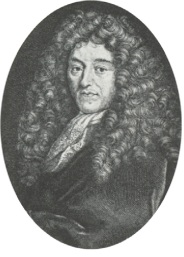

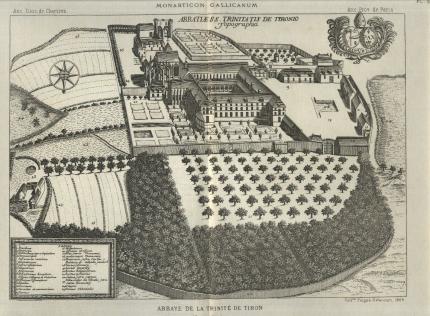
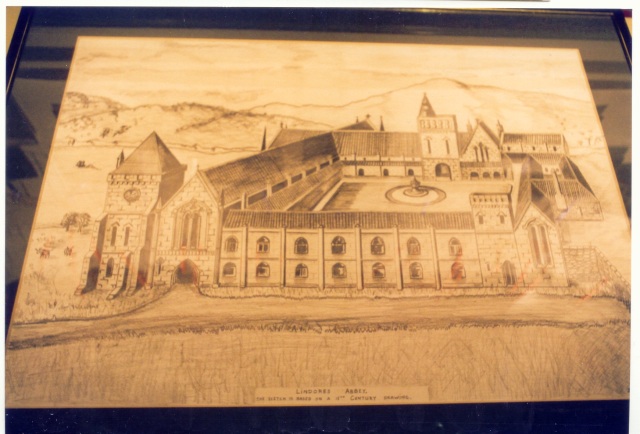
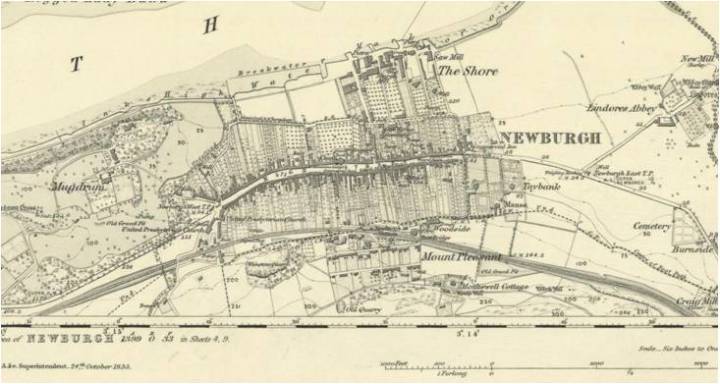
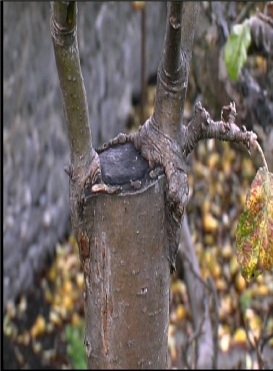
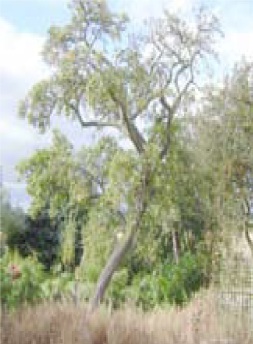
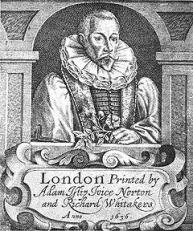

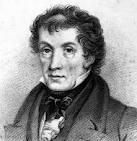

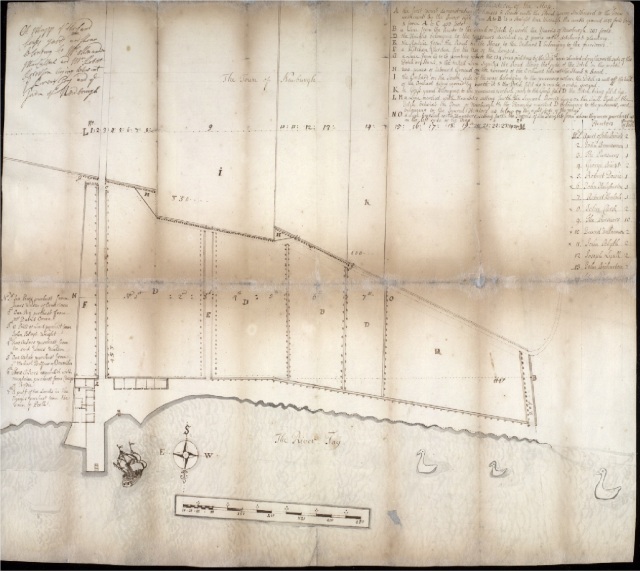

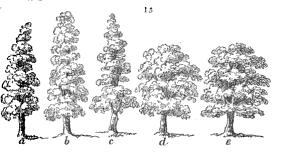


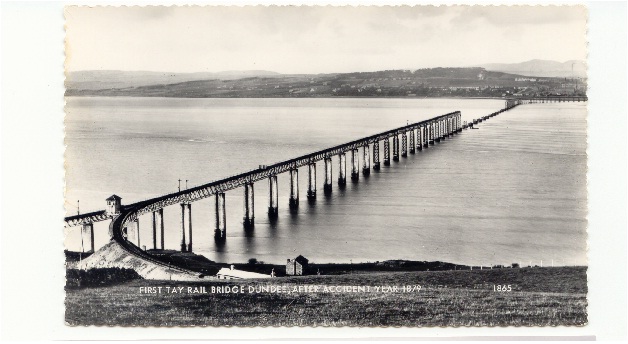
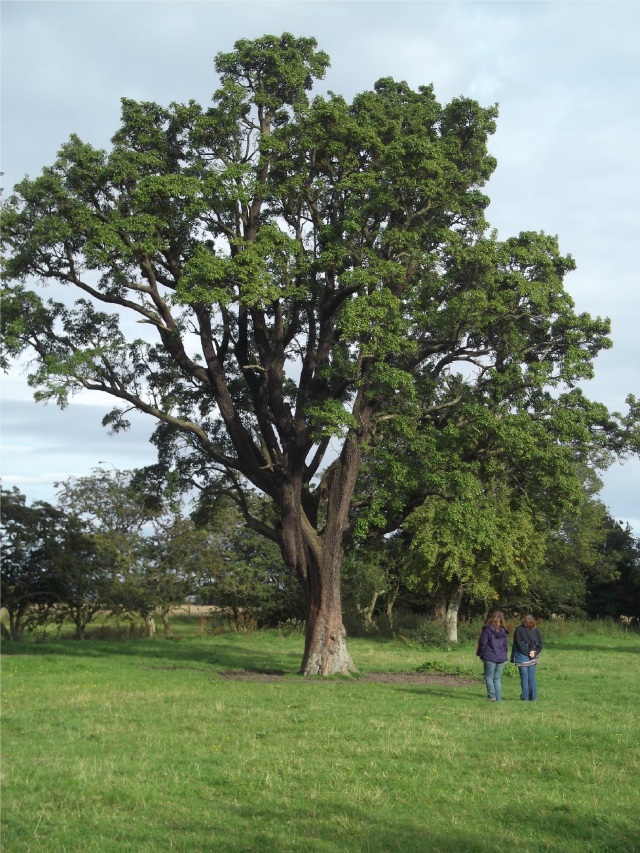
Denmylne…Can you please contact me asap re Scottish variety apple/ pear sicons and rootstock.
Kind Regards
email deleted
Brilliant, what a fantastic achievement, here’s to a Scots National Fruit Collection
p.s What is the best Scots perry pear, has somebody checked the tannin and acid
ratio’s, do we have pears to match Yellow Huffcap, Moorcroft and Thorn ?
last year, we identified a Double Blossom pear tree in an ancient orchard in the carse
we believe that this is one of the scots perry pears mentioned by archibald gorrie in 1832
to date, this is the only scots perry pear tree identified or known, anywhere..
i will be taking cuttings this year for grafting and will harvest the fruit from it. we are at the stage of rescuing these trees from extinction.
I’ve been resident or active in the Carse area on and off for the past 14 years. Have you looked at the wee walled orchard at the entrance to Inchyra village about 50 yards south of the railway line next to Inchyra farm, or at Templehall (just a few hundred metres from Monorgan) – in both there are many apple and certainly at Templehall a mature pear tree visible next to the apples, none of which are easily accessible to the public. They all fruit heavily most years yet never seem to be picked – rather the fruit all ends up falling behind a wall or into fields occupied by horses or cattle. I have no idea if they are rare Carse varieties or more recent additions, mind you. Fascinating research project you have presented here – thoroughly wish you all the best.
I have carried out loads of work in the carse, i think i know the temple hall tree you talk about, it is called the monorgan in this site
i grafted a few sions from it last year but they didnt take, it is such a large tree it is difficult reaching the branches
i also have 150 pear trees which are becoming pot bound if you want any,?
Hello, How can I contact you?
Very interesting piece of research. Are you looking for people who have 1-2 trees or many trees. I live at Fingask near Rait & have an apple & a pear tree & wouldn’t mind having another rare variety grafted onto them. I also have a very successful Victoria plum tree if that helps. The ground is very furtile where I live as no doubt you know that. If you’re interested please contact to discuss further. 🙂 Love the idea of having a rare variety brought back from near extinction. Good luck with your continuing work in this feild. 😉
Fascinated by this article. More than a year on from the last post, but considering planting one (or more) of these heritage varieties further down the Tay, in Tayport. Are you still looking to offload pot-bound pear trees?
Hello
I would like to plent a heritage pear tree in our woodland at Ballinbreich if possible.
Hi Crichton back again,
Have designed a small Scots Clachan in Newburgh Aberdeenshire, at its heart
there is an abstract Kelpie, hoping to grow some ancient Scots apple and pear trees amongst
the wynds and lanes.
Do you still have some available ?
There is a small video clip of the design on youtubeby type ” toors o ythan,”
and press play.
best regards
Crichton
Very interesting article, thank you. Have you heard of the famous Auchans pear from the auld hoose near Dundonald castle in Ayrshire?
YES I have, I also have one remaining black auchan in newburgh with extremely good provinance, it was planted by the owner’s (a very old lady) grandfather. It is the most sought after pear as it does well in cold climates and micro regions (hills, north facing slopes etc) and is the latest bearing pear tree in scotland. late December ie, xmas. It has a thick leathery skin which helps it to keep until april/may
Please see the Wikipedia article on Auchans house for more details.
I am in charge of an ancient neglected orchard which has come into public ownership in Bannockburn. We have a spindly pear tree against the House -which I think could be ‘Souvenir du Congres’ and a huge tree which was covered in tiny hard, yellow pears in September. There are also two trees which may be pear – grafted onto hawthorn. These trees have been chopped down but are shooting from above the graft. I would love your advice.
take cuttings (scions)and graft them onto pyrus communus rootstock. this ensures that the pear type survives. if you cant find rootstock, buy a pear tree from aldis or lidls, cheap, then graft onto it